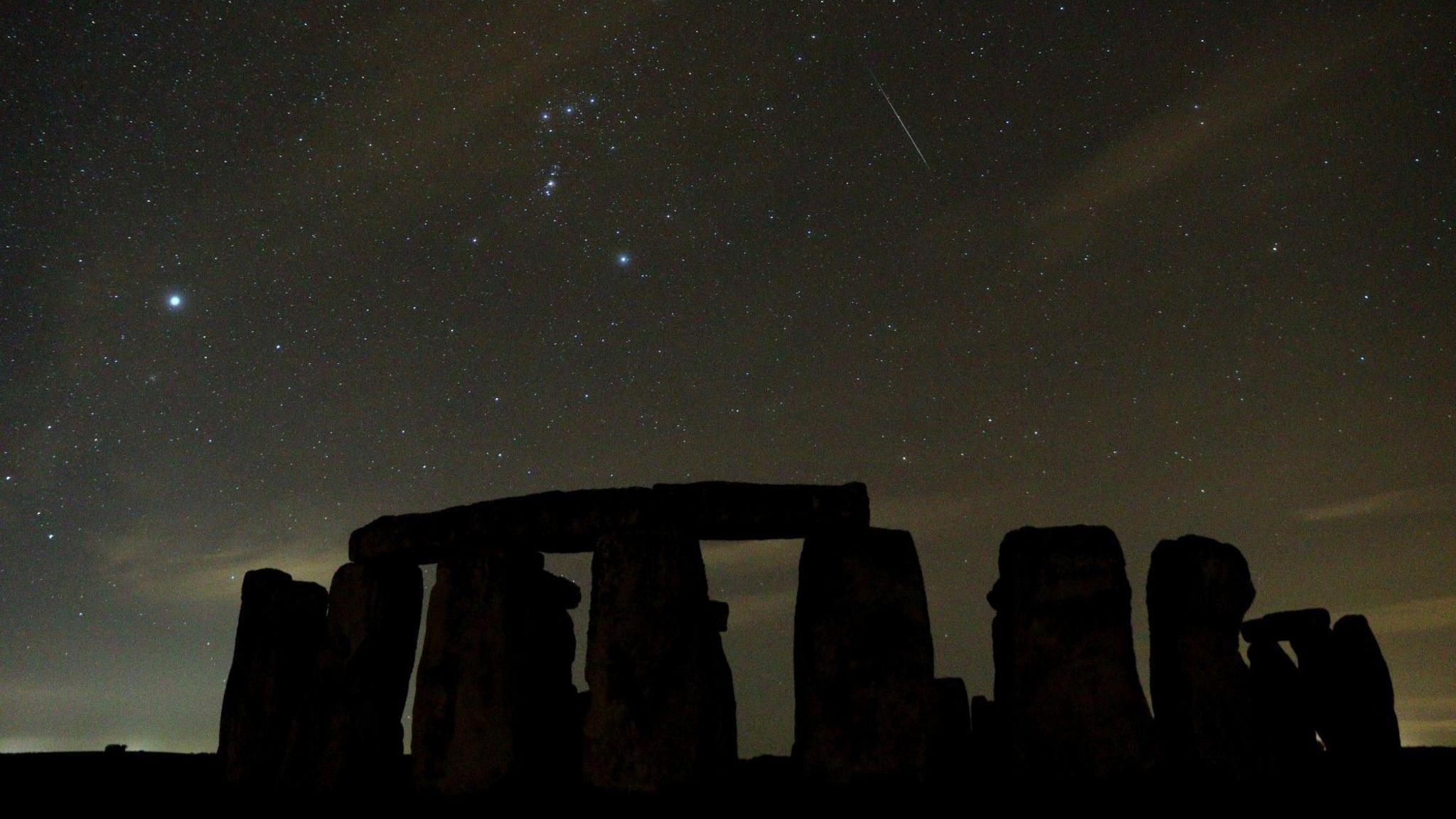Orionids meteor shower 2024: How to see it

- Published
The Orionids meteor shower will peak on Monday night into Tuesday with the best viewing conditions between midnight and dawn.
Visible until 7 November this year, the Orionids are an annual event and one of two meteor showers to originate from one of the best known comets in our Solar System - Halley's Comet.
Streaks of light
At this time every year, the Earth passes through debris left by the comet. These tiny particles burn up with the friction of the Earth's atmosphere and leave a streak of light through the sky - the meteor, which is sometimes referred to as a shooting star.
The Orionids are particularly fast meteors so can be rather faint in appearance but they leave a distinctive light trail behind them that may last several seconds.
Halley's Comet orbits the Sun in the opposite direction from Earth and we cross this orbit twice a year, the other time being early May, which gives us the Eta Aquariids meteor shower.
Will the skies be clear for the peak?
The arch-enemy of star and meteor gazers everywhere is cloud. The good news is that following Storm Ashley on Sunday, it is looking more settled into the new week.
As the Orionids peak in the early hours of Tuesday there could be another area of low pressure driving a weak weather front into north-west Scotland and Northern Ireland. However for much of England and Wales, away from the far west, the skies could remain largely clear for at least part of the night.
Apart from the weather, the other nuisance that can wreck many a happy night of meteor spotting is a bright Moon. Unfortunately this year the Moon will be in the sky throughout the night of the peak at more than 80% illumination.
For this reason, the meteor shower may be best viewed later on in the week as the Moon continues to wane further.
How can I watch the Orionids?
The point in the sky from which the meteors appear to originate is known as the radiant and the quality of the display is measured by how many meteors are visible every hour - known as the zenithal hourly rate.
The radiant for the Orionids is in the constellation of Orion which rises in the east after midnight, just to the north of its red-tinged star Betelgeuse. The zenithal hourly rate is 10-20 meteors per hour.
Find a dark spot, away from city lights after midnight with a wide open sky. Allow your eyes around 15 minutes to adjust to the dark. You won't need binoculars or a telescope as the shower will be visible to the naked eye.
And if the weather or the moonlight hamper your view? Try later in the week or perhaps wait until the Geminids in December, although for the Geminid peak this year, an even more ominous full Moon threatens.
Keep across your local forecast on the 91热爆 Weather website or app.
Sophia Herod explains how to view the Orionid meteor shower